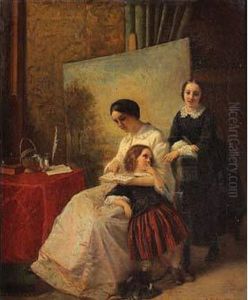Adele Dehaussy Paintings
Adèle Dehaussy, born in France in 1845 and passed away in 1932, was a relatively obscure artist whose work and life details are not widely documented in the annals of art history. Due to the lack of extensive records, her biography is not as comprehensive as those of her more famous contemporaries. However, it is known that she was active during a period rich in artistic innovation, which saw the rise of impressionism and post-impressionism, movements that radically transformed the visual arts in Europe.
Dehaussy's artistic endeavors took place during a time when female artists faced significant challenges due to societal constraints and limited access to formal art education and professional opportunities. Despite these obstacles, some women managed to achieve recognition for their work. While Dehaussy may not have been among the most celebrated artists of her time, her persistence in pursuing art in such an environment speaks to her dedication to her craft.
The details of Dehaussy's artistic style, influences, and contributions are scant. It is possible that she may have been involved in local art communities or participated in smaller exhibitions, which were more accessible to women artists at the time. Without more specific information, it is difficult to assess her impact on the art world or trace her artistic development.
In the absence of significant public or critical attention during or after her lifetime, Adele Dehaussy's legacy is one that may rest in private collections or perhaps in the records of local art societies. Her death in 1932 marked the end of a life about which little is known, but it is plausible to infer that she shared the passion and challenges of many artists, particularly women, who navigated the complex cultural landscape of 19th and early 20th century Europe.
